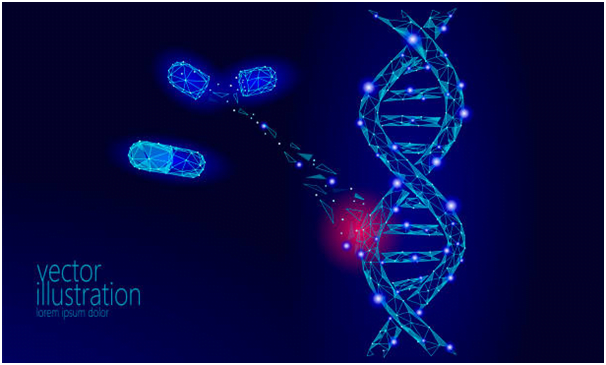What is Gene Therapy?
Gene therapy is a technique used in modern medicine wherein a foreign Deoxyribonucleic Acid (DNA) is introduced into host cells to treat or prevent illness. Although still in development, Gene Therapy is one of the most promising ventures of modern medical science in regard to the treatment of persistent and dominant genetic conditions.
How does gene therapy work?
Any gene needs a vector to be delivered into the cell. The process of gene delivery is known as transduction. The most common vector used are viruses, which are introduced into the body via injection, or grafted onto the patient. The viruses are modified to not cause diseases in the host’s body once injected. Viruses can integrate the genetic material into the chromosome (retrovirus), or infect the cell and inject their DNA into the nucleus without affecting the chromosome (Adenovirus), which can then synthesize the protein that was affected due to mutated gene.

History
While the theories of Gene therapy were already in discussion in scientific communities from the early 1970s, the first gene therapy trial was approved in 1990 for a 4-year-old girl named Ashanti DeSilva. Her body lacked a vital enzyme called Adenosine deaminase (ADA), and as a result, she was highly susceptible to fatal infections, a condition called Severe Combined Immunodeficiency (SCID).
The viral vector was used to introduce the ADA gene into her T cells, which resulted in a successful treatment.
However, the field suffered a massive setback when in 1999, 18-year-old Jesse Gelsinger suffering from ornithine transcarbamylase deficiency died after four days of being injected due to severe immune reaction.
Fast forward two decades, Gene therapy has been developed for many diseases considered untreatable, such as cancer, Sickle cell anaemia, haemophilia, and show promising outcomes for neurogenetic diseases as well as AIDS.
Gene Therapy For The Eye
The eye is a closed system, which doesn’t let vectors to move outside into the body. This is a reason why the eye is considered to be a suitable model for gene therapy.
One of the first breakthroughs of gene therapy in ocular diseases has been for Leber’s congenital amaurosis (LCA). LCA is an autosomal recessive genetic disorder due to mutation in The research on the gene RPE65 led to innovative technologies like LUXTURNA ( It is the first FDA-approved gene therapy for a genetic disease) which improved visual function and thus improves the quality of life of the patients.



